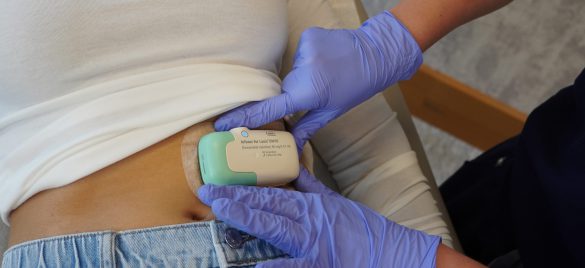The Interests of Providers and Payors are Aligned
We aim to be the catalyst to realize the benefits of treating worsening heart failure at home
Working Together for a Common Goal
Lasix ONYU offers a cost-effective treatment option for managing patients with fluid overload caused by worsening heart failure at home. It allows patients who do not require admission to receive effective treatment in the comfort of their own home. Everyone wins when this is done, but everyone needs to work together to get there. This is why we plan to launch Lasix ONYU with hospitals and networks.

Developing a Roadmap to Home Together
Background
- Lasix ONYU enables innovative clinical workflows that benefit the healthcare system as a whole.
- Lasix ONYU can disrupt the traditional Emergency Department (ED) to hospital admission path, but payors and providers need to work together to make it happen.
Distribution — Available Where Needed
- Lasix ONYU will be available through leading pharmaceutical distributors including 340B contract pharmacies. This provides availability where and when needed — in emergency departments, clinics, and other patient care settings.
- Training can happen with the first unit and the patient can travel home with the Infusor already placed. The patient can then start the treatment in the comfort of their home. These product features enable the workflow clinicians asked for.
The Better Path to Home Requires Collaboration
- The path to home may have its obstacles. Alignment of interest is not enough — collaboration is required to develop the workflow and remove the obstacles so all can benefit.
- We start with a provider interested in reducing the burden of inpatient care. Once the goals and plans are defined, we seek to engage with the corresponding payors to remove barriers. Barriers may include burdensome and long prior authorization procedures or prohibitive co-pays.
- We’re eager to engage with you to allow more patients to be treated at home.
I would like to:
Working on Workflows
If you believe your hospital or clinic is ready to
embrace wider decongestion at home, please contact us below. We will reach out to start a conversation so that your organization can get started in developing a plan for this exciting and important transition. Below is our list of workflows where Lasix ONYU can contribute to reduce the burden for patient, provider and payor.

I would like to:
ED to Home
The path to admission commonly goes through the ED. In most hospitals, an ED visit for fluid overload results in an admission in more than 90% of the cases. EDs are busy and in many cases beds are not readily available, slowing down the throughput. For an estimated 25%-30% of patients, ED to home would be the better option. We now need to make a plan to break the mold and send those patients home for whom that would be the better option. “Observation unit to home” is a variant of this, where the patient is discharged after a meaningful start of decongestion during the observation stay.
Clinic to Home
This is a variant of the ED to Home workflow, but with two important differences: first, the patient is now in the care of the heart failure clinician, which facilitates evaluation and qualification. Second, the clinic may now include patients who have a lower acuity, e.g., candidates considered for Lasix ONYU treatment who may not be nearly guaranteed to be admitted.
Early Discharge
Although conceptually similar to the ED or Observation Unit to Home, early discharge is very different in many administrative respects. This now counts as an admission and the Diagnosis-Related Group is applied. There may be cases where this makes sense, but the collective goal should be to prevent admissions, not shortening length of stay (LOS) in patients admitted.
Prevention of Readmission
It is widely recognized that many patients in the U.S. are discharged with excess fluid. This puts them at high risk of adverse outcomes including hospitalizations. Lasix ONYU can help to achieve dry weight after discharge. Alternatively, when a patient reports an increase in symptoms at a post-charge visit, Lasix ONYU can be used to reverse the course and help to prevent a readmission. In this case, a post-discharge patient may become a pre-acute patient.
Discharge to Home
More and more the 30-day episode of care matters, not just the hospitalization. Many patients now receive burdensome post-acute care (PAC) in skilled nursing facilities, inpatient rehabilitation facilities, long-term care hospitals, or are served by home health agencies. Innovative workflows may increase the proportion discharged to home.
Revolving Door Patient
Hospitals may describe a subset of heart failure patients as “frequent flyers” or “revolving door” patients. These patients frequently face admissions due to worsening symptoms. An innovative workflow utilizing Lasix ONYU may help prevent these recurring hospitalizations. For instance, some patients could benefit from weekly or bi-weekly decongestion with Lasix ONYU to achieve euvolemia.
Hospital-at-home
Worsening heart failure is a leading indication in Hospital-at-home programs. Hospital-at-home programs require hospital-level medical treatment and 24-hour monitoring for acute illness or condition. Lasix ONYU can provide an alternative to Hospital-at-home if nursing and custodial services are not required. Lasix ONYU may be an attractive alternative following a short Hospital-at-home episode to finish decongestion. Venous access is often a problem in Hospital-at-home programs to deliver IV furosemide. Lasix ONYU can offer an alternative in those cases as well.
Hospice and Palliative Care
Unfortunately, many patients with heart failure eventually reach a NYHA Class IV diagnosis, with increasing difficulty to keep the patient comfortable in the face of worsening congestions due to fluid overload. Subcutaneous furosemide can offer relief outside the hospital.
We Designed Lasix ONYU with these Workflows in Mind

Designed for Patients
The Lasix ONYU Infusor slowly administers 80mg furosemide over five hours. This method provides diuresis similar to an IV, but in a controlled manner. This may help lessen the brief, intense diuretic effect that may occur with rapid IV infusion or injection.

Designed for Providers
Lasix ONYU accommodates the desired clinical workflows. It can be prepared and placed on the abdomen in the clinic with an option to delay start of treatment for up to 7 hours. In this period, the patient can travel home and start treatment with a single press of a button after getting home.

Designed for Payors
Electronics are expensive and our design allows a single electromechanical component to be used for up to 48 treatments. The disposable unit is manufactured using high-capacity robotic assembly. The combination of reuse of electronics and automated manufacturing of the single-use component allows for a markedly reduced cost of the treatment.

Designed for the Planet
Medical waste is incinerated and ultimately ends up in landfills. Our two-component design ensures that the electronic components and battery are not part of the medical waste. The Lasix ONYU electronics can be used for up to 48 treatments before being recycled. Additionally, our design enables us to avoid using ethylene oxide for sterilization, which is a known carcinogen and environmental hazard.
Other Questions or Concerns
If you have questions or concerns about the product please email us at info@sqinnovation.com.
You are encouraged to report negative side effects of prescription drugs to the FDA. Visit www.fda.gov/medwatch or call 1-800-FDA-1088. You may report side effects to the FDA at 1-800-FDA-1088.

